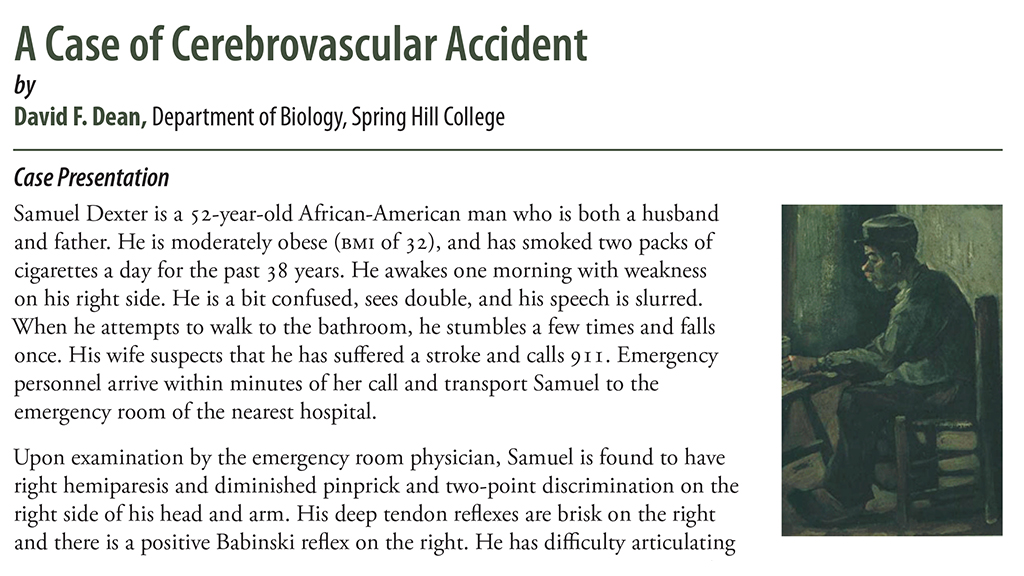Abstract
"Samuel Dexter" is 52 years old, overweight, and a heavy smoker. He wakes one morning with weakness on his right side. When he attempts to walk to the bathroom, he stumbles and then falls. His wife, who suspects he has suffered a stroke, calls 911. Students read the short case scenario, including a brief clinical history of the patient and description of his injury, then answer a set of directed questions designed to probe the students’ knowledge of the anatomy, physiology, and pathology underlying the patient’s condition. The case has been used in both a sophomore-level course in human anatomy and physiology and a senior-level course in general physiology.



